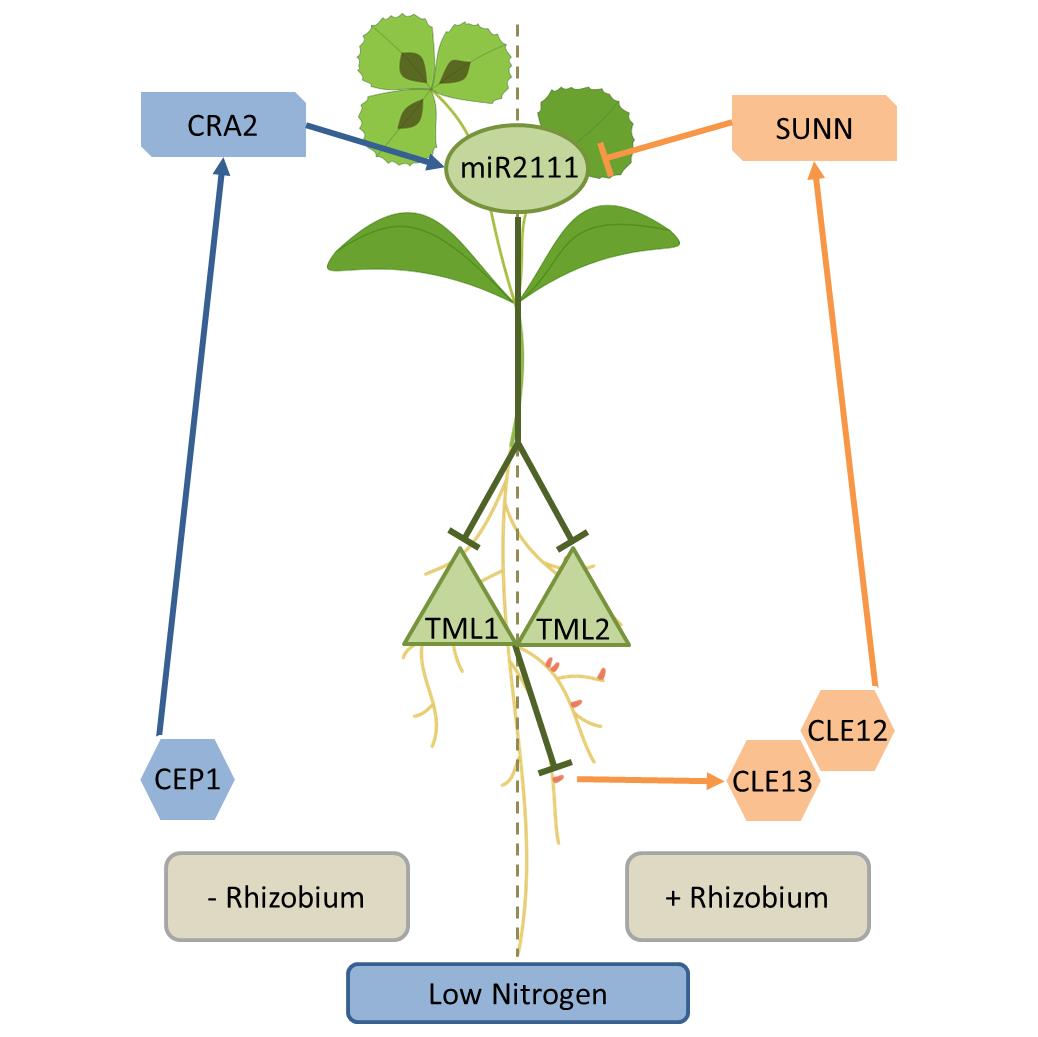At the crossroads of systemic pathways regulating symbiotic nodulation
The Compact Root Architecture 2 (CRA2) pathway promotes root competence for nodulation through the miR2111 systemic effector
Nitrogen-deprived legume plants form new root organs, the nodules, following a symbiosis with nitrogen-fixing rhizobial bacteria. As this interaction is beneficial for the plant but has a high energetic cost, nodulation is tightly controlled by host plants through systemic pathways (acting at long distance) to promote or limit rhizobial infections and nodulation depending on earlier infections and on nitrogen availability. In the Medicago truncatula model legume, CLE12 (Clavata3/Embryo Surrounding Region 12) and CLE13 signalling peptides produced in nodulated roots act in shoots through the SUNN (Super Numeric Nodules) receptor to negatively regulate nodulation and therefore autoregulate nodule number. Conversely, CEP (C-Terminally Encoded Peptides) signalling peptides produced in nitrogen-starved roots act in shoots through the CRA2 (Compact Root Architecture 2) receptor to promote nodulation already in the absence of rhizobia.
The SILEG team, headed by Florian Frugier, showed in their latest study (Gautrat et al 2020, Current Biology) that a downstream shoot-to-root signalling effector of these systemic pathways is the shoot-produced miR2111 microRNA that negatively regulates TML1 (Too Much Love 1) and TML2 transcripts accumulation in roots, ultimately promoting nodulation. Low nitrogen conditions and CEP1 signalling peptides induce in the absence of rhizobia the production of miR2111 depending on the CRA2 receptor activity in shoots, thus favoring root competence for nodulation. Together with the SUNN pathway negatively regulating the same miR2111 systemic effector when roots are nodulated, this allows a dynamic fine-tuning of the nodulation capacity of legume roots by nitrogen availability and rhizobial cues.
Contact: florian.frugier@cnrs.fr

Figure 1. Schematic representation of systemic pathways regulating M. truncatula nodulation.
Under low nitrogen conditions, the CRA2 pathway regulates positively nodulation already before rhizobial infection through the miR2111/MtTML systemic regulatory module. After rhizobial symbiotic infections occurred,the SUNN pathway negatively regulates nodulation through the same systemic regulatory module. Overall, the balance between these two systemic pathways allows a dynamic fine tuning of nodule numbers depending on preexisting rhizobial infections and on nitrogen availability.
